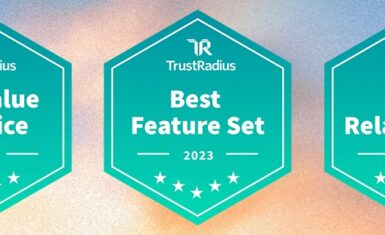In celebration of the 17th year milestone of Parallels® Desktop for Mac, we’re looking back at an incredible journey that has seen us empower Mac users & developers to smoothly operate & build over 200,000 Windows applications on their chosen Mac device. Our dedicated Parallels team continually marvels at the inventive ways our strong base of 7 million customers utilize Parallels Desktop for Mac to cater to their specific virtualization needs daily.
Whether it’s employing a Windows-only application that Mac doesn’t support, leveraging exclusive Windows features, designing, developing, or testing software across diverse operating systems, enjoying gaming, running demanding CAD apps, or collaborating cross-platform with peers or students, our users have accomplished remarkable milestones with Parallels Desktop for Mac.
Join us as we delve into some standout moments of our astounding 17-year journey!
June 15, 2006, marked the genesis of Parallels Desktop for Mac, pioneering the world’s first virtualization software for Intel-based Mac. This innovation revolutionized the industry, granting Mac users the convenience of running Windows and Mac OS X simultaneously, a feat previously unattainable without rebooting through Boot Camp.
February 27, 2007, was the unveiling of the Coherence Mode feature, allowing customers to conceal Windows Desktop and operate Windows apps side-by-side with Mac applications within the Mac OS X environment. This mode remains a fan-favorite among Parallels Desktop users today.
On November 4, 2009, we added support for Apple trackpad gestures and keyboard actions such as drag-and-drop and copy-and-paste, further smoothing the operation between systems.
Fast forward to September 14, 2010, when Parallels Desktop introduced 64-bit mode support.
June 2011 brought the introduction of Parallels Desktop for Mac Business Edition, equipped with a volume license key to activate Parallels Desktop on a large scale.
November 6, 2011, we saw NASA use Parallels Desktop on MacBook laptops to land the Curiosity Rover on Mars!
We didn’t stop there; on September 4, 2012, we added support for DirectX 10 and Bluetooth devices on both Windows and macOS.
Fast forward to August 28, 2013, the birth of Parallels Access — the quickest, simplest, and most reliable remote access solution to a Windows or Mac system from iOS, Android, or an HTML browser.
By August 19, 2015, we had released Parallels Desktop for Mac Pro Edition — an enhanced version for power users and developers. This edition introduced the world’s first voice-assisted personal assistant on the Mac: Windows 10 Cortana, working with both Mac OS X and Windows!
On August 18, 2016, the Parallels Toolbox for Mac made its entry, offering 25 single-purpose tools to simplify common Mac tasks with just one click.
Following its success, on June 29, 2017, Parallels Toolbox for Windows was launched to streamline common Windows computing tasks.
By March 2019, Parallels Desktop for Mac had garnered a DEVIE award for “BEST in Operating System Development.”
Later, on August 13, 2019, our users could run more demanding Windows programs like CAD apps and games on a Mac, thanks to the support we added for DirectX 11, 10, and 9 on Apple Metal.
By October 20, 2020, we had released Parallels Desktop for Chrome OS, the first software to run Windows directly on enterprise Chromebooks!
The following year, on April 14, 2021, Parallels Desktop 16.5 for Mac launched with complete native support for Mac computers with Apple M1 chips.
Fast forward to February 16, 2023. Microsoft authorized the use of ARM versions of Windows 11 Pro and Enterprise installed in a virtual machine with Parallels Desktop for Mac for customers on Mac with Apple silicon.
Finally on May 16, 2023, Parallels Desktop attained ARM SystemReady VE Certification, to meet the highest industry standards and solidify its position as a leader in virtualization technology.
Here’s to 17 years of Parallels!





